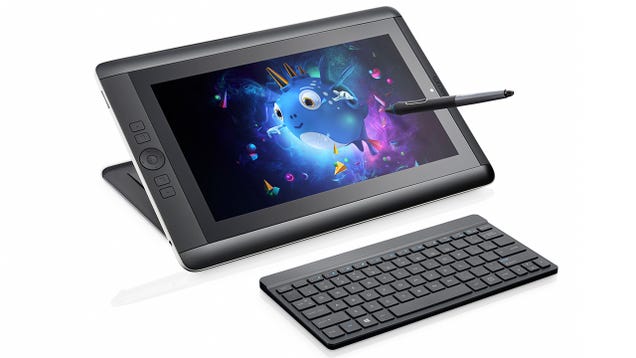Posted this on Reddit already - re-posting here in order to get as many people as possible involved.
I think it's been quite a while since we've had any updates to the N-trig digitizer software - both to the regular driver and the WinTab driver. With the regular driver, we get jitter when attempting to draw slower, more precise strokes. I know non-artists are not particularly bothered by this one point, but from what I've seen, there are enough people that do care.
Second, the WinTab driver needs addressing since at least one major creative application, Autodesk's SketchBook Pro 2015 suffers from loss of pressure sensitivity when this driver is installed and from lack of touch control when this driver is absent.
Third, a control panel of some kind is sorely needed to adjust the pen's pressure curve per user preference and, less importantly, to allow re-mapping of the pen's buttons per application. Without the pressure curve adjustment many people, myself included, report having to use too much pressure while sketching/drawing (in apps other than OneNote) and also not having every stroke register (particularly the beginning of strokes). This last issue happens even in OneNote and I would guess that a slight change in the pressure curve used could correct the problem.
I urge anyone who finds these issues to be important, to go to N-trig's support page and submit a report asking for status or feedback. I did my part just before posting here. Note that the submission form only seems to work from Internet Explorer (in Firefox, the submit button does nothing - not sure about Chrome).
I think it's been quite a while since we've had any updates to the N-trig digitizer software - both to the regular driver and the WinTab driver. With the regular driver, we get jitter when attempting to draw slower, more precise strokes. I know non-artists are not particularly bothered by this one point, but from what I've seen, there are enough people that do care.
Second, the WinTab driver needs addressing since at least one major creative application, Autodesk's SketchBook Pro 2015 suffers from loss of pressure sensitivity when this driver is installed and from lack of touch control when this driver is absent.
Third, a control panel of some kind is sorely needed to adjust the pen's pressure curve per user preference and, less importantly, to allow re-mapping of the pen's buttons per application. Without the pressure curve adjustment many people, myself included, report having to use too much pressure while sketching/drawing (in apps other than OneNote) and also not having every stroke register (particularly the beginning of strokes). This last issue happens even in OneNote and I would guess that a slight change in the pressure curve used could correct the problem.
I urge anyone who finds these issues to be important, to go to N-trig's support page and submit a report asking for status or feedback. I did my part just before posting here. Note that the submission form only seems to work from Internet Explorer (in Firefox, the submit button does nothing - not sure about Chrome).

